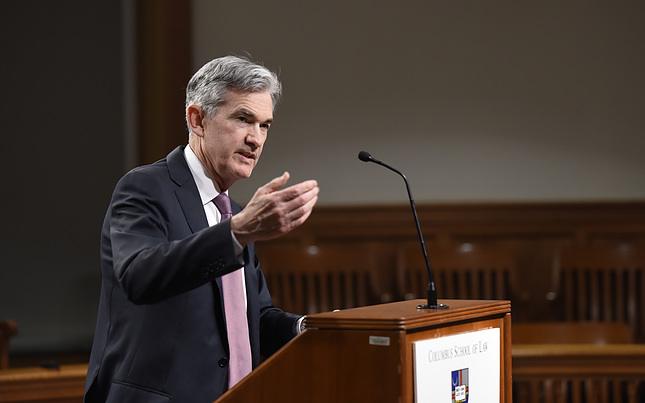- EUR/USD maintains its position as the US Dollar continues its downward correction.
- The US Dollar’s downside appears restrained due to dampened odds of an imminent Fed rate cut.
- ECB President Lagarde stated that Europe should pool its resources in areas such as defense and climate.
EUR/USD remains steady with a positive bias, hovering around 1.0600 during Tuesday's Asian trading hours. The upbeat sentiment surrounding the pair is likely driven by a softer US Dollar (USD), as profit-taking follows its recent rally.
However, the downside risk for the US Dollar appears limited as Federal Reserve (Fed) Chair Jerome Powell tempered expectations for immediate rate cuts. Powell highlighted the economy's resilience, a strong labor market, and persistent inflationary pressures, stating, "The economy is not sending any signals that we need to be in a hurry to lower rates." Investors are now looking for further guidance from Fed officials later this week on the future path of US interest rates.
Additionally, the Greenback may further appreciate as investors anticipate that the incoming Trump administration will prioritize tax cuts and impose higher tariffs. These measures could fuel inflation, potentially slowing the pace of Fed rate cuts.
European Central Bank (ECB) President Christine Lagarde stated on Monday that Europe should consolidate its resources in areas such as defense and climate, as its productivity growth stagnates and the world becomes increasingly fragmented into competing blocs.
ECB President Lagarde highlighted that Europe is falling behind in innovation and productivity compared to the US and China. According to Bloomberg, the lack of a unified digital market and insufficient venture capital investment are significant barriers to technological advancement in the region.
Traders are now focused on the upcoming October Harmonized Index of Consumer Prices (HICP) data for the Euro area, set to be released on Tuesday. Attention will then shift to US Building Permits and Housing Starts data later in the North American session.
Euro FAQs
The Euro is the currency for the 19 European Union countries that belong to the Eurozone. It is the second most heavily traded currency in the world behind the US Dollar. In 2022, it accounted for 31% of all foreign exchange transactions, with an average daily turnover of over $2.2 trillion a day. EUR/USD is the most heavily traded currency pair in the world, accounting for an estimated 30% off all transactions, followed by EUR/JPY (4%), EUR/GBP (3%) and EUR/AUD (2%).
The European Central Bank (ECB) in Frankfurt, Germany, is the reserve bank for the Eurozone. The ECB sets interest rates and manages monetary policy. The ECB’s primary mandate is to maintain price stability, which means either controlling inflation or stimulating growth. Its primary tool is the raising or lowering of interest rates. Relatively high interest rates – or the expectation of higher rates – will usually benefit the Euro and vice versa. The ECB Governing Council makes monetary policy decisions at meetings held eight times a year. Decisions are made by heads of the Eurozone national banks and six permanent members, including the President of the ECB, Christine Lagarde.
Eurozone inflation data, measured by the Harmonized Index of Consumer Prices (HICP), is an important econometric for the Euro. If inflation rises more than expected, especially if above the ECB’s 2% target, it obliges the ECB to raise interest rates to bring it back under control. Relatively high interest rates compared to its counterparts will usually benefit the Euro, as it makes the region more attractive as a place for global investors to park their money.
Data releases gauge the health of the economy and can impact on the Euro. Indicators such as GDP, Manufacturing and Services PMIs, employment, and consumer sentiment surveys can all influence the direction of the single currency. A strong economy is good for the Euro. Not only does it attract more foreign investment but it may encourage the ECB to put up interest rates, which will directly strengthen the Euro. Otherwise, if economic data is weak, the Euro is likely to fall. Economic data for the four largest economies in the euro area (Germany, France, Italy and Spain) are especially significant, as they account for 75% of the Eurozone’s economy.
Another significant data release for the Euro is the Trade Balance. This indicator measures the difference between what a country earns from its exports and what it spends on imports over a given period. If a country produces highly sought after exports then its currency will gain in value purely from the extra demand created from foreign buyers seeking to purchase these goods. Therefore, a positive net Trade Balance strengthens a currency and vice versa for a negative balance.
Information on these pages contains forward-looking statements that involve risks and uncertainties. Markets and instruments profiled on this page are for informational purposes only and should not in any way come across as a recommendation to buy or sell in these assets. You should do your own thorough research before making any investment decisions. FXStreet does not in any way guarantee that this information is free from mistakes, errors, or material misstatements. It also does not guarantee that this information is of a timely nature. Investing in Open Markets involves a great deal of risk, including the loss of all or a portion of your investment, as well as emotional distress. All risks, losses and costs associated with investing, including total loss of principal, are your responsibility. The views and opinions expressed in this article are those of the authors and do not necessarily reflect the official policy or position of FXStreet nor its advertisers. The author will not be held responsible for information that is found at the end of links posted on this page.
If not otherwise explicitly mentioned in the body of the article, at the time of writing, the author has no position in any stock mentioned in this article and no business relationship with any company mentioned. The author has not received compensation for writing this article, other than from FXStreet.
FXStreet and the author do not provide personalized recommendations. The author makes no representations as to the accuracy, completeness, or suitability of this information. FXStreet and the author will not be liable for any errors, omissions or any losses, injuries or damages arising from this information and its display or use. Errors and omissions excepted.
The author and FXStreet are not registered investment advisors and nothing in this article is intended to be investment advice.
Recommended content
Editors’ Picks

EUR/USD hovers around 1.0600 with a positive bias as US Dollar faces profit-taking selling
EUR/USD remains steady with a positive bias, hovering around 1.0600 during Tuesday's Asian trading hours. The upbeat sentiment surrounding the pair is likely driven by a softer US Dollar (USD), as profit-taking follows its recent rally.

GBP/USD trades with mild positive bias on softer USD, remains below 1.2700 mark
The GBP/USD pair attracts buyers for the second straight day on Tuesday amid a modest US Dollar (USD) downtick and climbs back closer to the 1.2700 mark during the Asian session. Spot prices, however, lack bullish conviction as investors opt to wait for the Bank of England's (BoE) Monetary Policy Report Hearings before placing aggressive directional bets.

Gold could run into sellers at $2,655 on the road to recovery
Gold price extends the recovery into Asian trading on Tuesday, reversing half the previous week’s decline. The focus remains on the upcoming speeches from US Federal Reserve (Fed) policymakers and geopolitical tensions between Russia and Ukraine.

Bitcoin could see another parabolic run following rising institutional interest
Bitcoin (BTC) began the week positively, rising over 3% above the $91K threshold on Monday. Despite the recent rise, BTC could begin another extended bullish move as top firms are increasing their Bitcoin holdings and potentially adopting it as a reserve asset.

The week ahead: Powell stumps the US stock rally as Bitcoin surges, as we wait Nvidia earnings, UK CPI
The mood music is shifting for the Trump trade. Stocks fell sharply at the end of last week, led by big tech. The S&P 500 was down by more than 2% last week, its weakest performance in 2 months, while the Nasdaq was lower by 3%. The market has now given back half of the post-Trump election win gains.

Best Forex Brokers with Low Spreads
VERIFIED Low spreads are crucial for reducing trading costs. Explore top Forex brokers offering competitive spreads and high leverage. Compare options for EUR/USD, GBP/USD, USD/JPY, and Gold.